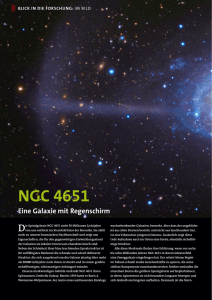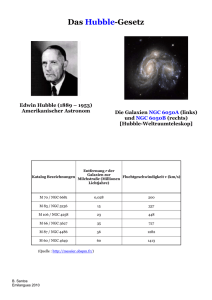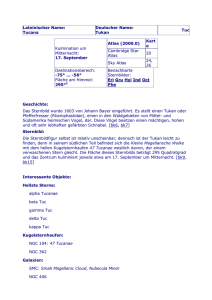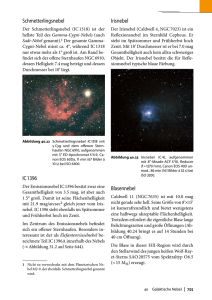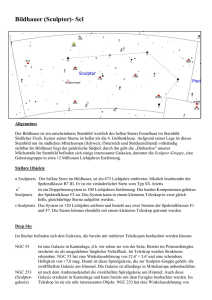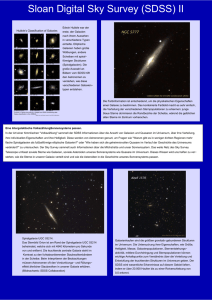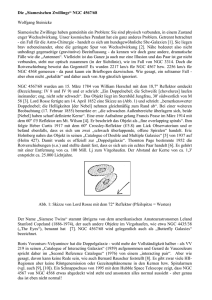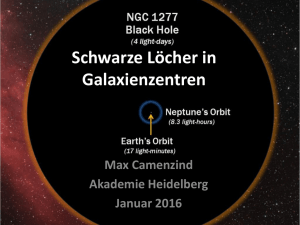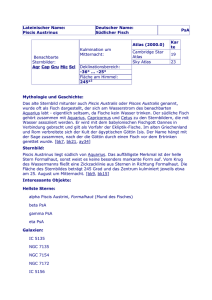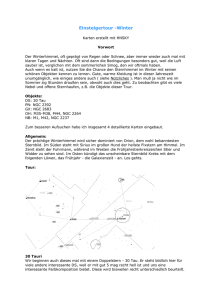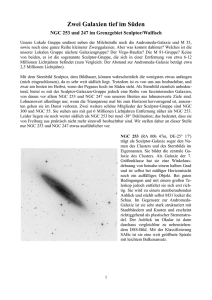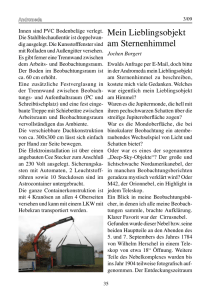CARTEL01 copia - Fundación Descubre
Werbung
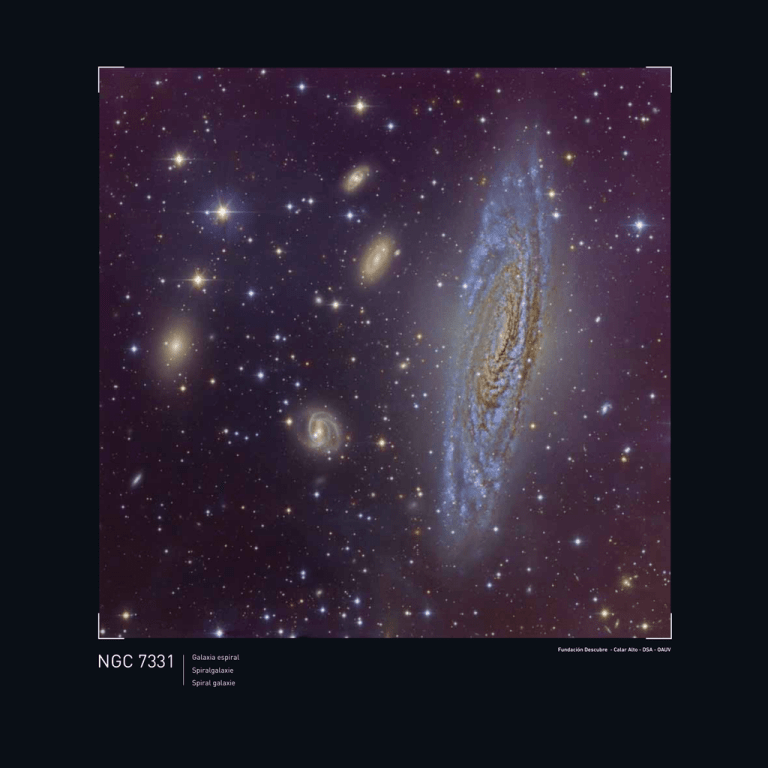
NGC 7331 Fundación Descubre - Calar Alto - DSA - OAUV Galaxia espiral Spiralgalaxie Spiral galaxie NGC 7331 – Galaxia espiral La galaxia espiral NGC 7331, en la constelación de Pegaso, es un universo isla semejante a nuestra propia Galaxia (o quizá algo mayor) y situado a 50 millones de años-luz de distancia. NGC 7331, descubierta por Wilhelm Herschel en 1784, muestra todo su esplendor en fotografías de larga exposición obtenidas con grandes telescopios. El disco alabeado de NGC 7331 exhibe su marcada estructura espiral brillando por detrás de un buen número de estrellas de nuestra Galaxia, y ante un fondo poblado por una cantidad y diversidad abrumadora de galaxias más lejanas. Buena parte del campo aparece ocupada por la fina neblina de las nebulosas fantasmales, difusas y pulverulentas conocidas como cirros galácticos. NGC 7331 – Spiralgalaxie Die Spiralgalaxie NGC 7331, im Sternbild Pegasus, ist ein Inseluniversum, ähnlich unserer eigenen Galaxie (oder vielleicht etwas größer) und befindet sich in einer Entfernung 50 Millionen Lichtjahren. Die 1784 von Wilhelm Herschel entdeckte Galaxie NGC 7331 ist auf Langzeitaufnahmen von großen Teleskopen in ihrer ganzen Pracht zu sehen. Die verbogene Scheibe von NGC 7331 zeigt deutlich ihre spiralförmige Struktur. Sie ist von einer Reihe von Sternen unserer Galaxie überlagert und leuchtet vor dem Hintergrund unzähliger, vielfältiger und weiter entfernter Galaxien. Ein großer Teil des Feldes ist vom feinen Dunst diffuser und gespenstischer Staubnebel bedeckt, bekannt als galaktische Zirruswolken. NGC 7331 – Spiral galaxy The spiral galaxy NGC 7331, in Pegasus constellation, is an island universe similar to our own Galaxy (or maybe somewhat larger) and placed at a distance of 50 million light-years. NGC 7331 was discovered by Wilhelm Herschel in 1784, and it displays all its magnificence in long-exposure photographs taken through large telescopes. The warped disk of NGC 7331 shows its outstanding spiral structure shinning behind a number of stars belonging to our Galaxy, and in front of a rich background populated by an overwhelming variety of distant galaxies. A good fraction of the field of view is occupied by a thin haze of the ghostly, fuzzy and dusty nebulae known as galactic cirrus. Fundación Andaluza para la Divulgación de la Innovación y el Conocimiento (Fundación Descubre) / Centro Astronómico Hispano Alemán (Observatorio de Calar Alto) / Documentary School of Astrophotography (DSA) / Observatori Astronòmic de la Universitat de València (OAUV) Vicent Peris (DSA/OAUV), Gilles Bergond (Calar Alto).
